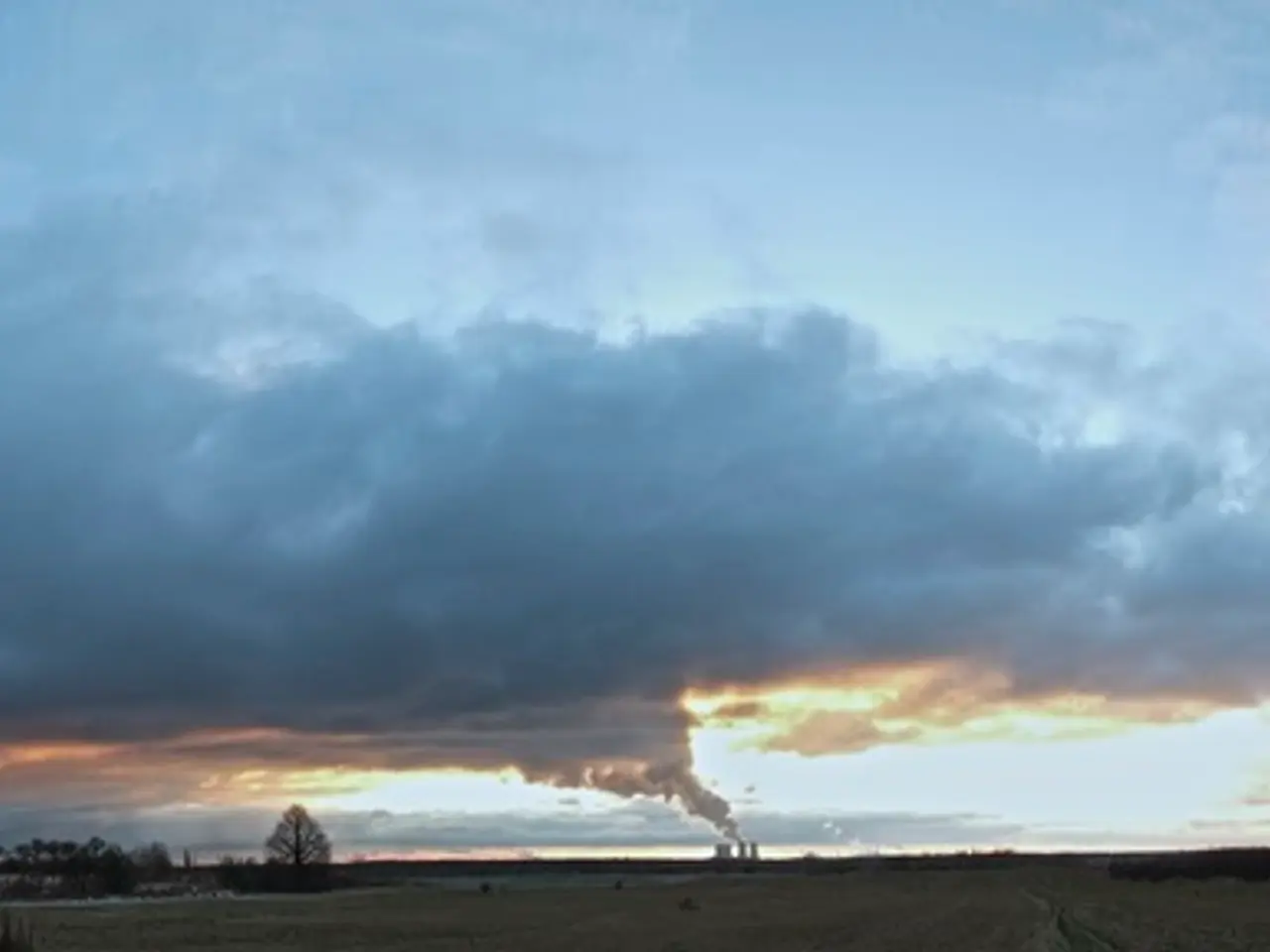Coal terminal operations in Curtis Bay, Baltimore, potentially contributing to local air pollution problems. Wind trends may influence dispersal patterns of pollutants.
In a groundbreaking study published in the journal Air Quality, Atmosphere & Health in July 2023, researchers have highlighted the inadequacy of current air pollution mitigation measures at Baltimore's Curtis Bay coal terminal. The study, co-led by Christopher D. Heaney, associate professor in the Department of Environmental Health and Engineering at the Johns Hopkins Bloomberg School of Public Health, and community members from Curtis Bay, has shed light on the significant impact of bulldozer activity at the terminal on air pollution levels in the adjacent neighborhood.
The study, which ran from July 2022 to July 2023, involved setting up 10 meteorological and air pollution-monitoring sites around the Curtis Bay community and a camera programmed to take pictures at regular time intervals to observe visible bulldozer activity at the coal terminal. The researchers gathered minute-by-minute data on the wind direction, the visible presence of bulldozer activity on coal piles at the terminal, and the levels of particulate matter air pollutants of various sizes, including black carbon.
The findings revealed that black carbon and particulate matter levels tended to be significantly higher when the wind was blowing from the terminal, compared to when the wind was blowing from other directions. Similarly, these pollutant levels were significantly higher, on average, when bulldozers were visibly active on the coal piles.
The Curtis Bay neighborhood, directly to the west of the coal terminal, has been plagued by coal dust pollution for decades. Residents have long reported dust pollution from the terminal in and around their homes. An explosion at the terminal in 2021 further exacerbated these concerns, leading to increased complaints and government scrutiny from federal, state, and local entities.
The current mitigation measures for the Curtis Bay coal terminal primarily include a wind fence and a wetting system designed to suppress coal dust emissions. However, the study results support the residents' complaints about coal-related air pollution from the terminal and suggest that these measures are not adequate. The authors note that the findings indicate a need for more effective mitigation strategies.
Exposure to particulate matter and black carbon air pollution at sufficient levels has been linked to adverse health impacts, including respiratory, cardiovascular, neurological, and reproductive diseases. The study was co-authored by a collaborative research team consisting of scientists from Johns Hopkins University, University of Maryland, University of California at Davis, University of Cape Town in South Africa, and the Maryland Department of the Environment.
The new study, titled "Relation of Wind Direction and Coal Terminal Activity Patterns with Air Pollution Burden in a Community Bordering a Coal Export Terminal, Curtis Bay, Maryland, USA", was published in November 2024. The research team emphasizes that their work was a collaboration among scientists at different institutions, driven by the concerns of community members within Curtis Bay.
While the study does not detail any new mitigation techniques, ongoing monitoring and awareness efforts by university researchers and community members suggest potential for future policy or operational changes to reduce these air pollution burdens. The Curtis Bay Piers terminal, originally built in 1882, is a large storage facility for coal brought by rail mainly from coal mines in Pennsylvania and West Virginia, primarily for transport to India and several Northern European countries.
- The study, published in the Air Quality, Atmosphere & Health journal in July 2023, conducted research in the field of environmental science and highlighted the inadequacy of current air pollution mitigation measures at Baltimore's Curtis Bay coal terminal.
- The collaborative research team, consisting of scientists from Johns Hopkins University, University of Maryland, University of California at Davis, University of Cape Town in South Africa, and the Maryland Department of the Environment, concluded that exposure to particulate matter and black carbon air pollution at sufficient levels has been linked to various adverse health impacts, including respiratory, cardiovascular, neurological, and reproductive diseases.
- The publication of this new study in November 2024, titled "Relation of Wind Direction and Coal Terminal Activity Patterns with Air Pollution Burden in a Community Bordering a Coal Export Terminal, Curtis Bay, Maryland, USA," underscores the need for innovation in technology and engineering to develop more effective air pollution mitigation strategies.
- In response to the study's findings and the subsequent increase in government scrutiny, there is a growing call for public health intervention to address the environmental and health-and-wellness concerns in the Curtis Bay neighborhood, which has been plagued by coal dust pollution for decades.
- As the Curtis Bay Piers terminal continues to operate as a large storage facility for coal, ongoing research and education efforts, along with advocacy from community members, may lead to climate-change and environmental-science-based policy changes aimed at reducing air pollution burdens and fostering a cleaner and healthier future for the surrounding community.




